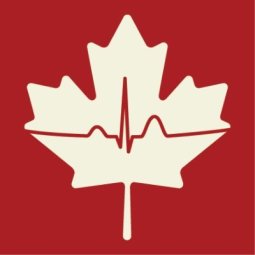David U. Himmelstein, Deborah Thorne, Elizabeth Warren, Steffie Woolhandler. The American Journal of Medicine, 2009.
Background: The Provinces conceived of Canadian Medicare during the post-war depression. In the late 60s, Saskatchewan Premier T. C. Douglas pointed out that a universal health care system, which shared risk, was essential to ameliorating the ravages of a family’s financial collapse brought about by illness and injury. But what happens to family finances when illness strikes if there is no universal health care system? A study in five US states in 2001 concluded that medical problems accounted for at least ½ of all personal bankruptcies, up from 8% in 1981. Given that the number of uninsured and underinsured Americans has increased since then, what influence has this had on bankruptcies caused by unpaid medical bills? This month’s e-Rounds examines the first-ever national survey of a random sample of personal bankruptcies in the US. This was conducted in 2007, just before the current world-wide financial turmoil, and before the concomitant tightening of bankruptcy laws.
Methodology: The US Automated Access to Court Electronic Records listed 118,308 personal bankruptcies in 2007. Data were retrieved from court records, surveys of debtors, and telephone interviews. A random sample of 5251 debtors received a questionnaire within two weeks of filing for bankruptcy, which included information on demographics, health insurance coverage and gaps, occupation, employment, housing, financial management before filing, and specific reasons for bankruptcy. Court records were obtained for all respondents and for a sample of non-respondents, and a sample of respondents was interviewed to provide additional details about employment, finances, housing and whether medical bills or income loss due to illness had contributed to bankruptcy. Medical bankruptcy was defined as illness or medical bills as a specific reason for bankruptcy; uncovered medical bills greater than $1,000 in the past two years; loss of at least two weeks of work-related income due to illness or injury; or, home mortgage to pay medical bills. Logistic regression analysis was used to assess predictors of medical bankruptcy and assess differences between 2001 and 2007.
Results: Of debtors with a valid address, 46.5% (2314) completed and returned the survey. Court records showed that non-respondents were similar to respondents in income, assets, debts, net worth, market value of homes and prior bankruptcy. The typical debtor was middle-aged, middle-class, had gone to college and two-thirds were homeowners. Compared with other debtors, a similar proportion of medical debtors were homeowners, with average net worth comparable to other debtors; medical debtors had slightly lower incomes, lower levels of educational attainment and occupational status, more were married, fewer were employed, and they were older with larger families. Illness or medical bills contributed to 62.1% of all personal bankruptcies in 2007, with 57.1% of the entire sample (92% of medical bankruptcies) having high medical bills. Among recent homeowners (as compared to all debtors) who were medically bankrupt, 34.7% had medical bills that exceeded either $5000, or more than 10% of annual family income. Interviewees cited health problems (41.8%), and 54.9% cited medical or drug costs, while 37.8% blamed loss of income. One-quarter of all debtors cited absence of health insurance at the time of bankruptcy, with 40% citing lapses of coverage in the two years prior to filing. While being uninsured did not cause bankruptcy, gaps in coverage did. Medical debtors identified more debt owed to doctors and hospitals than non-medical debtors ($4,988 vs. $256). Medical debtors with coverage gaps owed providers a mean of $8,338 compared to $2,740 for non-medical debtors. Out-of-pocket medical costs averaged $17,943 for medically bankrupt families, with the highest amounts seen with neurological diagnoses, diabetes, injuries, mental illness, and heart disease, respectively. Hospital bills were the largest single out-of-pocket expense for 48% of patients, followed by prescription drugs (18.6%), doctor’s bills (15.1%) and premiums (4.1%). Collection agencies contacted 37.2 million Americans about medical bills in 2003, a number that exceeds the entire population of Canada.
Limitations: Many debtors may have been unwilling to file for bankruptcy because they were too ill, too poor or too demoralized. Moreover, many may have mortgaged their homes or sold “the family farm” to pay down medical debt and avoid attention or filing for bankruptcy. It is also possible that debtors misclassified the causes of financial demise, or wished to conceal other socially unacceptable causes such as gambling debts.
Conclusions: For 92% of medically bankrupt Americans, medical bills contributed directly, with escalating out-of-pocket costs primarily attributable to either underinsurance or to loss of coverage from loss of employment. Income loss due to illness and injury was common and was nearly always coupled with high medical bills. Worse still, the financial burden of illness is increasing, with the relative increase of bankruptcies attributable to medical problems rising 49.6% between 2001 and 2007. Controlling for demographic factors, the odds that personal bankruptcy had a medical cause was 2.38 fold higher in 2007 than in 2001.
Relevance: Absence of health insurance does not in itself cause bankruptcy, but gaps in health insurance coverage are major contributors to out-of-pocket costs and medical bankruptcy in the United States. What might this say to Canada? Firstly, a universal health insurance system is essential. Secondly, employer-based health insurance is not a protection against medical bankruptcy, particularly in times of high unemployment, and uncoupling health insurance from employment should be seriously considered. The US has a long history of wedding health insurance to employment, yet this system has led to 47 million who are uninsured, and to many more who are underinsured. Finally, Medicare reforms in Canada that promote greater privately funded insurance coverage, at the expense of the safety net inherent in publicly funded insurance coverage, are likely to increase medical bankruptcy, estimated to range from 7-14% of personal bankruptcies in Canada.
